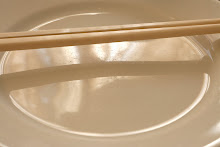Darker? I always want to lighten everything up. Always. It’s a true bias. Sometimes I want to make sharp what is soft, even if that’s not how it looked. It makes me feel more comfortable. Once I get to work using the midrange adjustments, I want to see the detail in the shadows or more richness in the color. I make a decision after glancing at the image what needs to be adjusted.
Here are some questions I received from Paul Giguere recently regarding cropping and editing:
Hi Julie,
One topic that gets a lot of attention is the issue of cropping photos. Now I know that is usually discouraged (it is the flash of perception as you see it in the moment that is important, not what you want to see later in post production) however, I notice many people use zoom and telephoto lens when practicing Miksang and is this not cropping of a sort? I find it hard to believe that someone was stopped by something when the distance-to-subject is several hundred feet away. What are your thoughts on in-the-field cropping?
I have another follow-on question regarding post-production of our photos. Some who practice Miksang state that no post-production should be done (at all, no exceptions). The photos right off the card are the final versions of the photos. Period. I find this kind of severe. I know both you and Michael Wood do minor post production on photos (curves, levels, etc. . . at least in the workshop any way) in order to bring the photo more in line with what your perception was at the moment the photo was taken. The issue is further complicated when using JPEG (the camera applies many kinds of presets to "improve" the image) or RAW (which needs some tweaking as the image is usually not ready right out of the camera). Thoughts?
Thanks much,
Paul
Dear Paul,
Check out this image Michael took at the Great Sand Dunes in Colorado as an example of this:

Lenses are tools to shoot our perceptions. If we see something across the street and we shoot it with a 50mm lens, there will be so much in the image that is not part of our perception that it will be lost. Someone looking at the image won’t be able to tell what stopped us. Even if we cropped the image, the final result might be ridiculously small. This is too much work and the result weak. If we have a zoom lens that will express the perception accurately then we can use it. Otherwise, we might want to bring our attention in a bit so that what we see in the viewfinder is the perception with nothing extra included.
Cropping is not a tool to improve upon our original perception. It can be used, however, to eliminate anything extra and bring the image in line with the perception. This is always the prime directive, to bring the image to the state that expresses the perception, nothing more - nothing less. Whether we lighten, darken, sharpen, bring up mid-tones, whatever we do with our adjustments, it is only to accomplish this purpose.
Thanks Paul.
Please join in the discussion on the topic of editing!
© Julie DuBose 2009
Great National Sand Dunes Photograph © Michael Wood 2009
